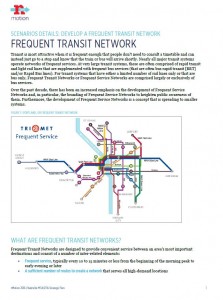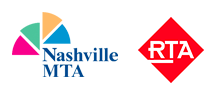This report in the Transit Strategies Series explores Frequent Transit Networks. Frequent Transit Networks are designed to provide convenient service between an area’s most important destinations and consist of a number of inter-related elements:
- Frequent service, typically every 10 to 15 minutes or less from the beginning of the morning peak to early evening or later
- A sufficient number of routes to create a network that serves all high-demand locations
- Direct routes that operate along major arterials, consisting of a combination of rapid transit, light rail, BRT, Rapid Bus, and local bus routes, and sometimes consisting entirely of local bus routes
- Special branding and information to make service visible and memorable
These elements are designed to make service more convenient, connected, and memorable.


Scenario 3 seems to have many other Frequent Peak routes than those described in the section “Scenario 3: Modest Improvements”. Not listed but on the map are:
22 Bordeaux
29 Jefferson/TSU
25 Edgehill
17 12th Ave S
4 East Nashville
Listed but not on the map is 19 Herman. 19 Herman is something of an enigma to me. I’d probably do something different with it: break it in two, turn them into collectors that do not go downtown but to local points of interest and the frequent network and charge a quarter.
The other routes above should be at least Frequent Peak though I would argue that Bordeaux, Jefferson, East Nashville and Lebanon should be Frequent All Day.